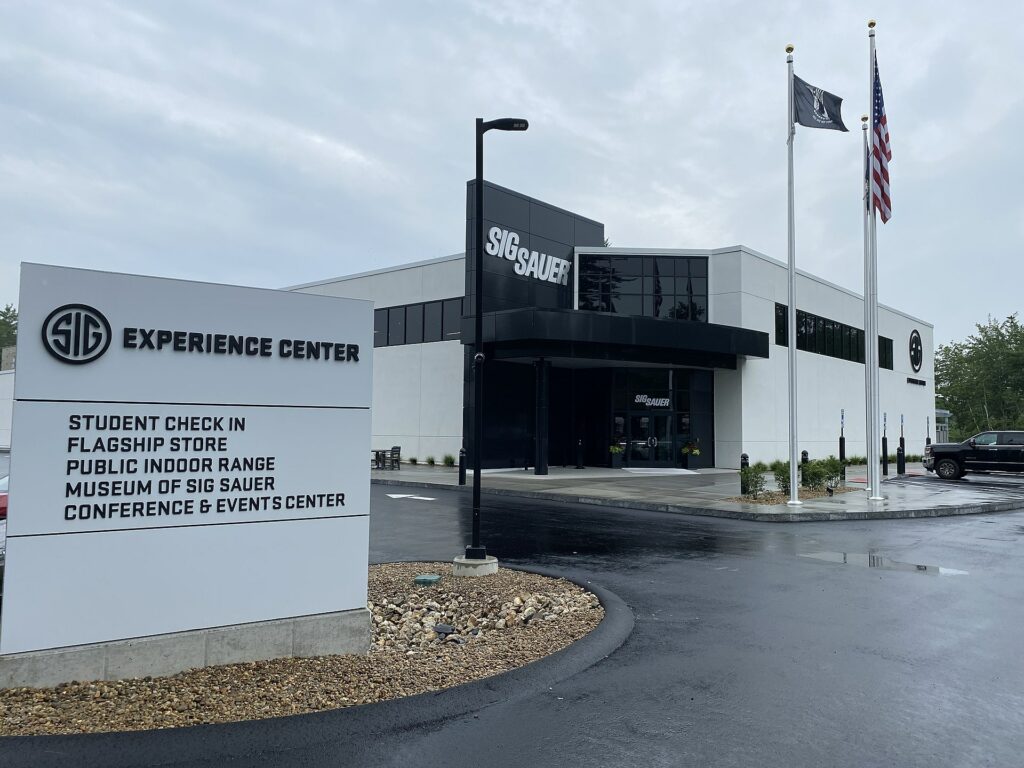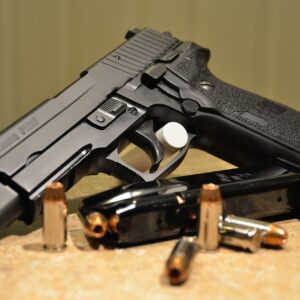It’s a tale of two major New Hampshire employers in the same industry.
While firearms manufacturer Sturm, Ruger & Company, Inc., reports a sharp drop in revenue and earnings, fellow gunmaker Sig Sauer is working on major expansions of its facilities on the Seacoast.
Based in Connecticut, Ruger has a manufacturing facility in Newport that is a key employer in the state’s Upper Valley region. Sig Sauer Inc., the American spin-off of the German company, is an economic powerhouse in the Seacoast region, with manufacturing as well as training facilities here. The company is based in Newington.
This month, Ruger reported another quarter of low sales and earnings, part of a slide that started in 2021. Ruger’s first quarter of 2023 saw net sales of $149.5 million and diluted earnings of 81 cents per share. That was a large drop from 2022’s first quarter, when Ruger had net sales of $166.6 million and diluted earnings of $1.70 per share.
Ruger CEO Christopher Killoy said in a statement to investors that the earnings drop is simply because fewer people are buying guns. Ruger has responded to the sales slide by making fewer guns.
“Decreased consumer demand led to a 10 percent reduction in first quarter sales compared to the prior year. We took a disciplined approach, targeted a production mix that better aligned with consumer demand, and continued to responsibly manage our overall production levels to reflect market conditions as we did throughout 2022,” Killoy said.
Gun sales across the industry have slipped since the record highs in 2020 associated with concerns about safety during the COVID pandemic. Firearms industry journalist Stephen Gutowski with The Reload reports that while 21 million guns were sold in 2020, there were 18 million sold in 2021 and 16 million in 2022.
Sig Sauer is not a public company, but the recent initiative to expand its facilities, which includes close to $40 million in loans from the New Hampshire Business Finance Authority, indicates financial strength.

On the other hand, Killoy told investors the company is facing worries over its ability to get financing and credit. Large banks are choosing political optics over business and so refuse to do business with firearms firms, even small businesses like gun shops.
“(W)e have been notified twice in the past five years by two of the nation’s largest banks, Bank of America and Wells Fargo, that they would not provide us with any credit because of the lawful products that we design, manufacture, and sell,” Killoy said.
According to Killoy, Ruger is operating with no debt and plenty of cash. He told investors that the company is well-positioned to break out of the slump.
“Our long-term focus will continue to yield strong cash flow, prioritize the development of innovative new products, and safeguard our robust, debt-free balance sheet, which in turn will allow us to withstand the volatility of the ever-changing firearms market,” Killoy said.
It’s not just the financial sector and a volatile market that gunmakers must worry about. It’s an industry hostage to irrational forces beyond its control: The government.
A firearms industry insider who spoke to N.H. Journal said that even as the threat of some government regulation can drive sales of guns, like a proposed assault weapons ban, other regulations can have a crippling effect on business.
In New Hampshire, state Sen. Deb Altschiller (D-Stratham) pushed a bill this year that would have opened the floodgates for lawsuits against gunmakers and gun sellers. Altschiler’s SB 247 would have removed limited liability for gunmakers, distributors, and dealers.
The industry insider said Altschiller’s bill would have let crime victims sue companies like Ruger if, say, a Ruger gun was used in a crime. The gun store that sold that Ruger could also get sued. The bill was spiked in the Senate along party lines 14-10.
Sig Sauer is currently facing lawsuits from 70 people claiming they were injured when their Sig Sauer P320 pistols fired without pulling the triggers. The P320 9 mm pistol, a civilian version of a weapon sold to law enforcement, is one of Sig Sauer’s bestselling guns.
According to the industry insider, a key difference between Ruger and Sig Sauer comes down to who is buying which particular brand.
Ruger’s lineup is seen as more budget-friendly and geared to average gun owners with a range of hunting rifles, sporting rifles, pistols, and a well-known line of Cowboy-style single-action revolvers.
Ruger’s most recent high-profile business venture was buying Marlin, the defunct maker of level-action rifles, and bringing buyers a new line of old-fashioned weapons.
Sig Sauer makes high-end guns for the retail market, and its firearms are nearly three times as expensive as comparable Rugers. The company also produces high-end pistols, rifles, and machine guns for the military and police markets. Sig Sauer signed a 10-year contract with the U.S. Army last year, reportedly worth $580 million.
Sig Sauer is supplying the Army with new assault rifles and machine guns using specially developed Sig Sauer ammunition as part of the military’s Next Generation Squad Weapon program.
Representatives for Ruger and Sig Sauer declined to respond to requests for comment.



